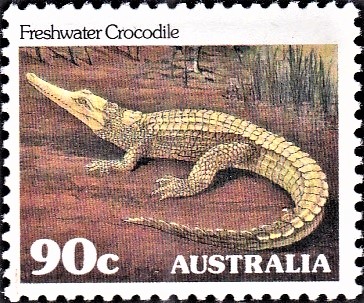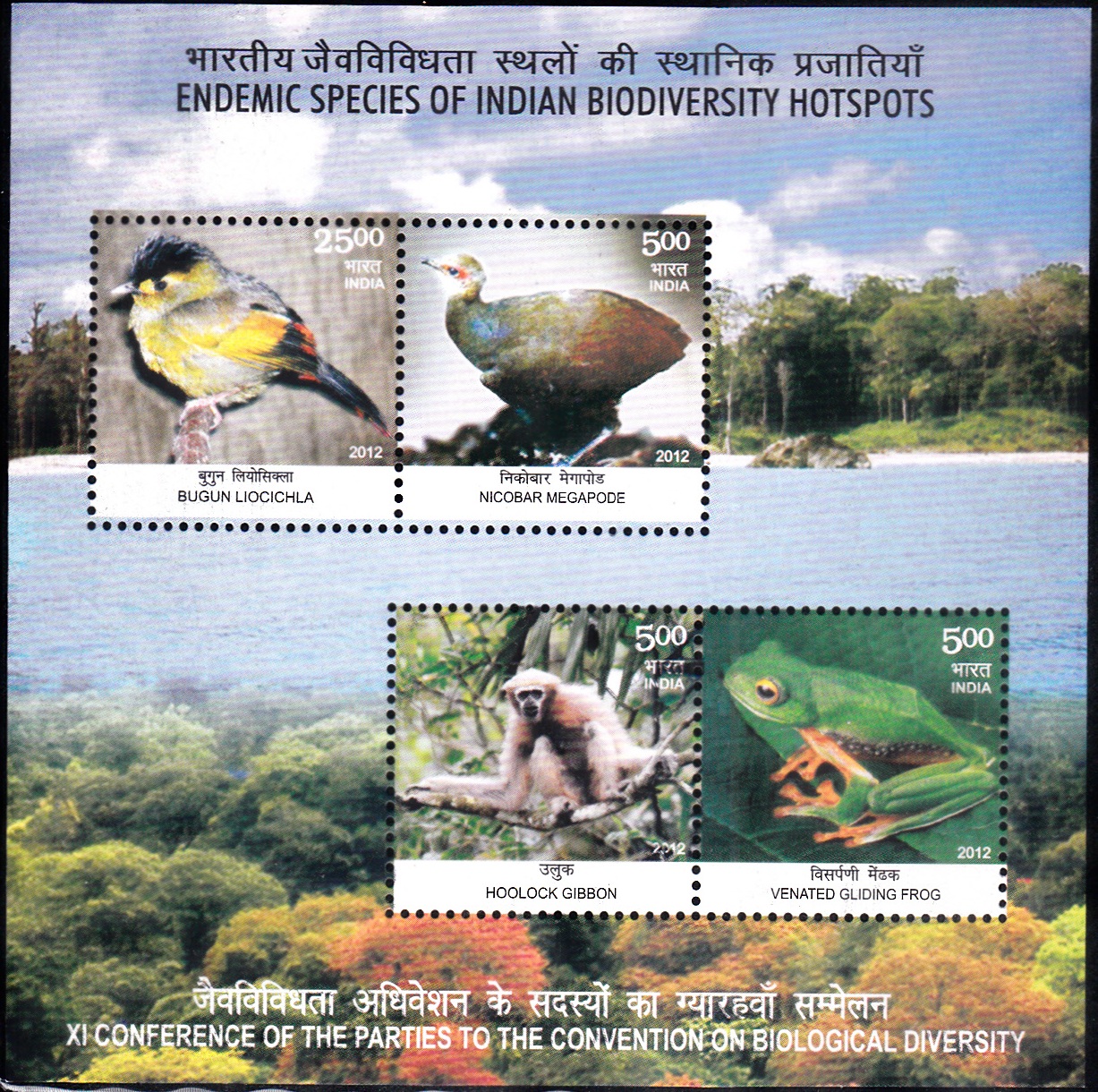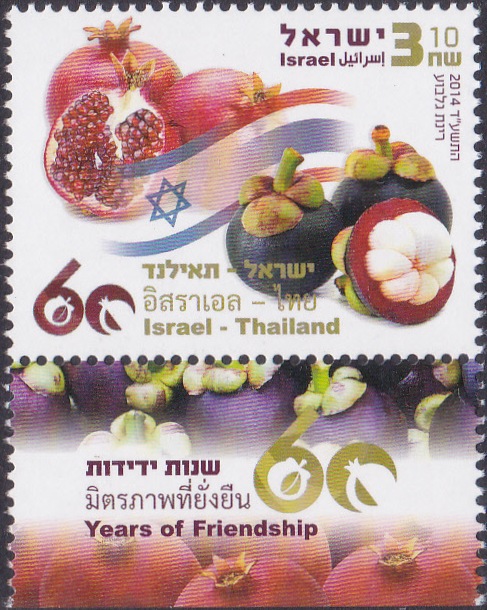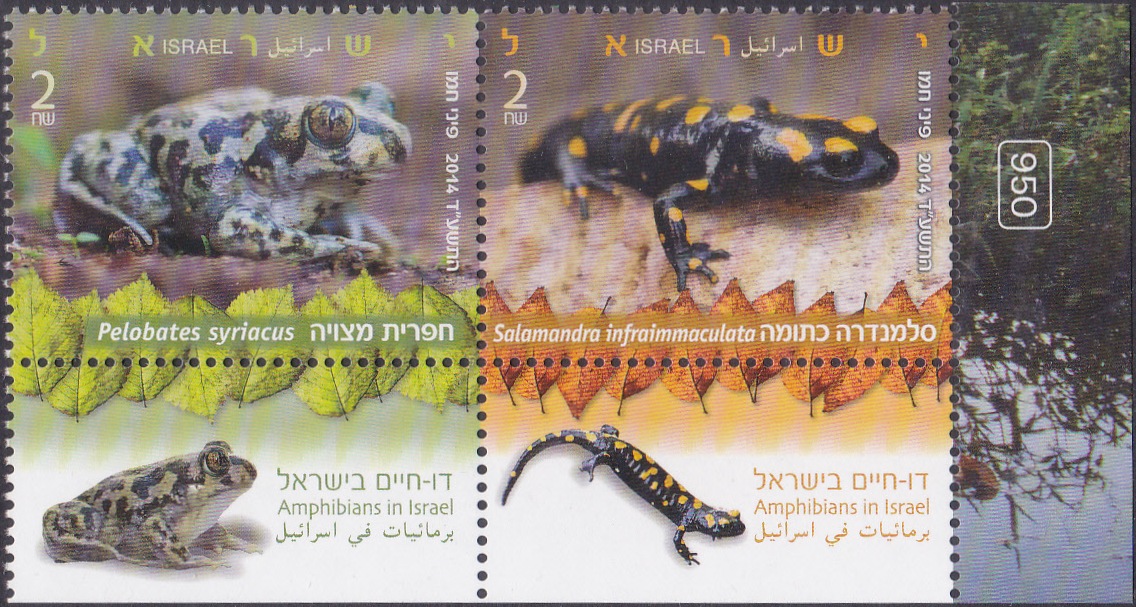
Amphibians in Israel 2014
Complete Set of 4 nos of commemorative postage stamps on the Amphibians in Israel :![1. Amphibians in Israel [Israel Stamp 2014]](https://istampgallery.com/wp-content/uploads/2015/04/1.-Amphibians-in-Israel-Israel-Stamp-2014.jpg)
![2. Amphibians in Israel [Israel Stamp 2014]](https://istampgallery.com/wp-content/uploads/2015/04/2.-Amphibians-in-Israel-Israel-Stamp-2014.jpg)
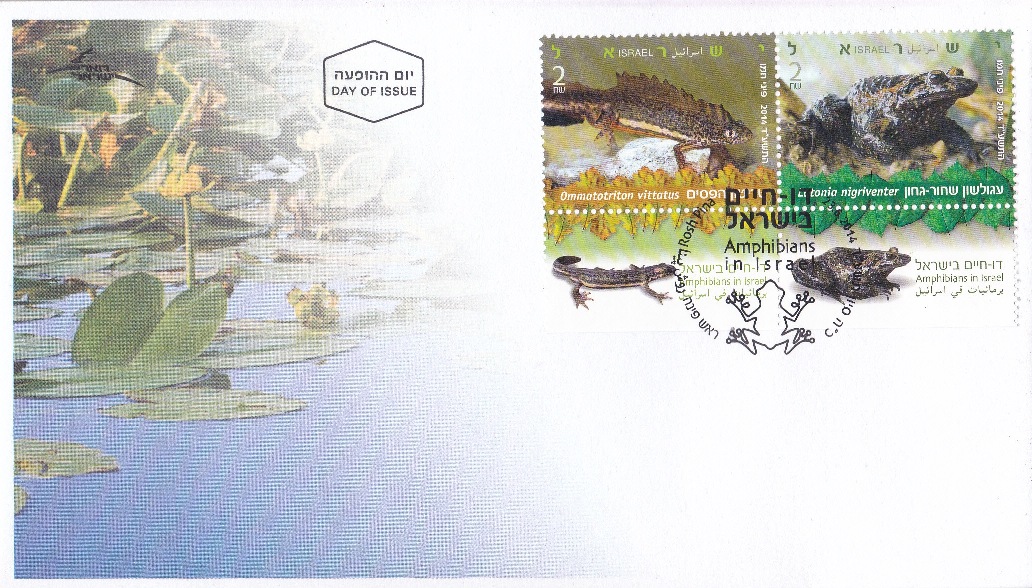
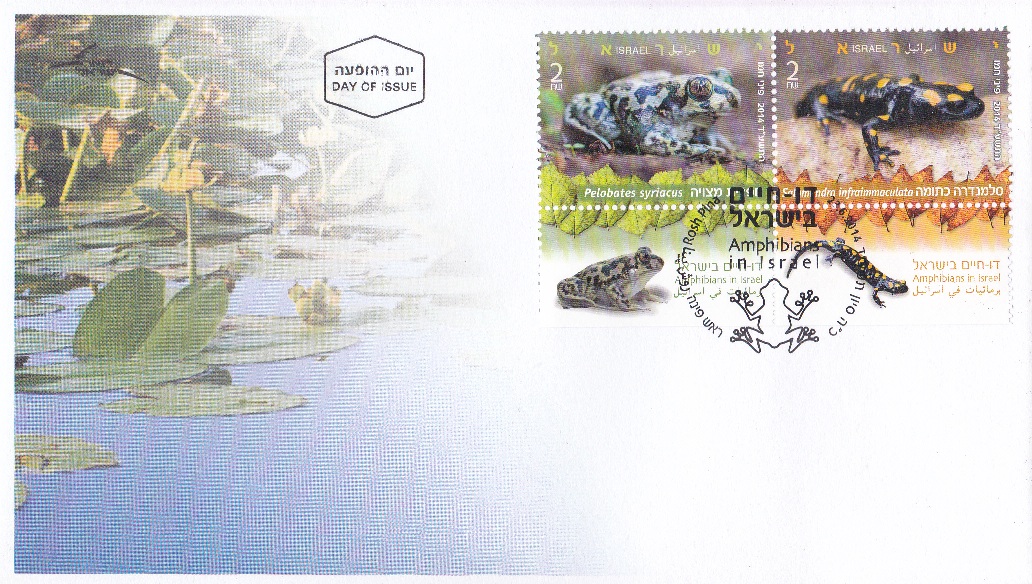 Issued by Israel
Issued by Israel
Issued on Jun 23, 2014
Description of the Stamps and the First Day Cover :
Near Eastern Fire Salamander stamp and tab, Southern Banded Newt stamp: photos by Guy Haimovitch.
Eastern Spadefoot Toad tab and stamp, stamp sheet margins and FDC: photos by Pini Hemo.
Hula Painted Frog stamp and tab, Southern Banded Newt tab: photos by Dror Galili.
Type : Se-tenant pair of Stamps with Tabs, Mint Condition and First Day Cover along with Stamp and a Special First Day Cancellation
Security mark : Microtext
Colour : Multi colour
Denomination : 2 Shekel each
Plate : 950
Stamps per Sheet : 8
Tabs per Sheet : 4
Method of Printing : Offset
Printer : Joh. Enschede, The Netherlands
About :
- This stamp series presents four of the seven amphibian species currently inhabiting Israel. All four species are endangered locally or globally. Human activity has harmed the amphibian class more than other vertebrates. Due to their extreme sensitivity, amphibians serve as a bio-indicator of deterioration in the global environment. Amphibians have mainly been harmed in Israel as a result of their habitats being destroyed, but the key reason for their being endangered in the world is infectious diseases which are mostly spread as a result of trade in amphibians.
- Southern Banded Newt :
- Scientific Name : Ommatotriton vittatus.
- The Southern Banded Newt lives along the edges of winter pools in the Mediterranean area of Israel. The adults are active from the beginning of winter. They are reddish-brown in color with a white abdomen and orange edges. This species eats small invertebrates. During the mating season the males grow a crest of skin and enter the water. Once the male locates a female, a courting ritual begins, at the end of which the male lays a sperm sac on the ground for the female to absorb. The eggs are laid on plant leaves, which the female rolls up in order to protect them. The tadpoles develop over the course of a number of months, and then leave the winter. This species is classified as being critically endangered in Israel.
- Hula Painted Frog :
- Scientific Name : Latonia nigriventer.
- The Hula Painted Frog was first documented in the Hula Valley in the 1940’s. Later, after not being seen since the 1950’s, it was the first amphibian species in the world to be classified as being extinct. It was rediscovered in the Hula Nature Reserve in November 2011 and since then additional frogs of this species have been found in the reserve and the surrounding area, attesting to the existence of an active population. There is very little biological and ecological information about this species. It was recently discovered that the Hula Painted Frog belongs to a species that became extinct in Europe one million years ago. This finding means that this species is a living fossil. It is classified as being critically endangered in the world.
- Eastern Spade–foot Toad :
- Scientific Name : Pelobates syriacus.
- The Eastern Spadefoot Toad lives along the edges of winter pools in the Mediterranean area of Israel. There are approximately 40 known populations in Israel. The populations in the Golan Heights and the Upper Galilee are genetically different than those in the Lower Galilee and the Coastal Plain. The adults are nocturnal and active from the beginning of the rainy season, but only when it rains. During the day these toads burrow deep into the soil, using the bony spade-like tubercles located on their hind legs. This species eats invertebrates, mostly snails, Mating takes place in the water and the notably large tadpoles (up to 20 cms) develop over the course of 3-5 months. Once the pools begin to dry up the tadpoles roll out of the water. The number of Eastern Spadefoot Toad populations found in Israel is decreasing, and the species is classified as being critically endangered.
- Near Eastern Fire Salamander :
- Scientific Name : Salamandra infraimmaculata.
- The Near Eastern Fire Salamander lives along the edges of winter pools, streams and springs on Mt. Hermon, in the Galilee and in the Carmel mountains. Adults (up to 30 cms) are mainly active in the winter. Their black and orange coloring serves as a warning of the toxin that is secreted on their skin. Mating takes place on land. The male locates a female and lays a sperm sac, which the female absorbs. The female spawns 15-100 tadpoles in the water, which then develop over the course of a number of months until they roll out of the water. This species is classified as being endangered in Israel.
- The above text is provided by Prof. Sarig Gafny, School of Marine Sciences, Ruppin Academic Center.


